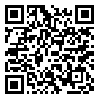BibTeX | RIS | EndNote | Medlars | ProCite | Reference Manager | RefWorks
Send citation to:
URL: http://rjms.iums.ac.ir/article-1-658-en.html
Background & Aim: Diabetic neuropathy occurs in approximately 50% of individuals with long-standing type I and type II DM(Diabetes Mellitus). The pathology of diabetic neuropathy involves oxidative stress, advanced glycation end products, polyol pathway flux, and protein kinase C activation.The purpose of this study was screening for diabetic neuropathy and analysing the relation between HbA1C and diabetic neuropathy. Material & Method: This descriptive-analytical study was carried out by means of interview, questionnaire, HbA1C testing, neurologic physical exams, and EMG(Electromyography) in Imam Reza Hospital in Urmia. 30 diabetic patients aged between 40 and 65 took part in the study. Results: We investigated the effects of DM on peripheral nerves. 20% of the patients had HbA1C less than 7.5%, 14% between 7.5% and 9.5%, and 66% more than 9.5%. 23% of the whole study group were asymptomatic, with no complaints of paresthesia. Among these patients 57% were in the group of good control of DM with HbA1C less than 7.5% and 43% were in the group of intermediate control of DM with HbA1C between 7.5% and 9.5%. The rest of the patients(77%) were symptomatic and included 8% with HbA1C less than 7.5%, 18% with HbA1C between 7.5% and 9.5%, and the rest of them(74%) were in the group of poor control of DM with HbA1C more than 9.5%. Electroneurophysiologic exam that was performed on the whole study group revealed that 43.5% of the patients had sensory polyneuropathy and 36.5% suffered from sensory-motor polyneuropathy. All the patients with sensory-motor polyneuropathy were in the group of poor control of DM with HbA1C more than 9.5%. Conclusion: Considering the findings, control of blood glucose level near the normal range with acceptable amounts of HbA1C will reduce the intensity of diabetes - related neuropathy.





